11. French Taste, Fench Grit.
French culture is celebrated the world over for fashion and cuisine (the very word is French). Both came to the fore in
the 19th century, and the French contribution remains important to this day. Both establish France as the arbiter of High Style.
By contrast, the films of the Nouvelle Vague (New Wave) directors of the 1960s seemed to make a style out of its opposite,
featuring ordinary protagonists in edgy situations. Their influence may have been more limited (Woody Allen is one obvious follower),
but the world's leading cinema festival is still held in France, at Cannes.
The script, videos, and images will be posted immediately after class.
VIDEO LINKS
Most of what we saw is available on YouTube, often at greater length. In the cuisine section, I added an interesting discussion
about Julia Child. In the section on Chanel, I added a longer biography, plus (†maybe) a complete movie, Coco Before Chanel, and
a separate link to the spectacular final scene; I also put in an extra set of clips from Le train bleu and a fun Little-Red-inspired
ad for Chanel No5. The selections for Marienbad are slightly different from those we saw, but are equally good at
capturing the flavor. The Breathless film is available complete, and all the clips are taken from that, with the addition of a trailer.
Items not shown in class are *asterisked. rb.
†The Coco Before Chanel movie has some sort of copy protection which may prevent you from
watching it more than once; the final scene is a separate posting, however, and should be OK.
| |
|
|
|
|
|
| IMAGES |
The thumbnails below cover the slides shown in class, though
there may be a few small discrepancies. Click the thumbnail to see a larger image.
Click on the right
or left of the larger picture to go forward or back, or outside it to close. |
 | |
 | |
 | |
 | |
 | |
 | |
 | |
 | |
 | |
 | |
 | |
 | |
 | |
 | |
 | |
 | |
 | |
 | |
 | |
 | |
 | |
 | |
 | |
 | |
 | |
 | |
 | |
 | |
 | |
 | |
Here are brief bios of the artists, composers, and writers considered in the class, listed in order of birth.
 |
Marie-Antoine Carême, 1783–1833. French chef.
Marie-Antoine (Antonin) Carême was born in Paris to a poor family, but working as an apprentice patissier, he soon became known for his elaborate constructions. From there, he moved into other aspects of cookery, working for Talleyrand, Napoleon, Tsar Alexander I, and the Prince Regent in Britain. His many books essentially codified haute cuisine for the next 150 years.
|
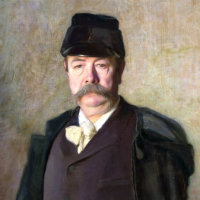 |
Charles Frederick Worth, 1825–95. English-French couturier.
Though English, Worth is considered the grandfather of French haute couture. Working in high-end retail shops in London and Paris, he gained attenttion by sewing his own dresses for clients. Soon after opening his own establishment in Paris in 1858, his work caught the eye of Empress Eugénie, launching his long career as the preeminent arbiter of French fashion, and the proprietor of the House of Worth, which established many of the practices that are taken for granted in the fashion world of today.
|
 |
Auguste Escoffier, 1846–1935. French chef.
Escoffier built on the foundations established by Antonin Carême, simplifying his complexities, and imposing discipline and order in his kitchens through his development of the brigade system. His skill for organization, especially in partnership with Swiss hotelier César Ritz, set a blueprint that is still the basis of restaurant practice today.
|
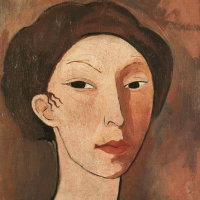 |
Marie Laurencin, 1883–1956. French painter.
Born and trained in Paris, Laurencin left it only during WW1, since she had lost citizenship by marrying a German husband. She was associated with Cubist circles before the war, but developed her distinctive stlye after her return: mainly compositions of wraithlike women in harmonious colors.
|
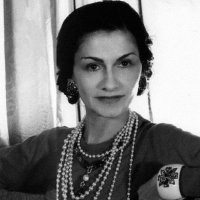 |
Coco Chanel, 1883–1971. French couturier.
Chanel learned to sew in a convent orphanage. After flirting with a career on the stage, she opened business as a milliner in Paris, and a couturier in Deauville and Biarritz, financed by one or other of the rich men she seemed to attract with ease. Her innovation was in creating fashion for active women, employing ideas and materials from everyday sources. She was also an astute businesswoman, selling retail versions of her creations and developing accessories such as purses, shoes, and her iconic perfume Chanel No5.
|
 |
Bronislava Nijinska, 1891–1972. Polish choreographer.
Polish by birth, but born in Russia, Nijinska joined the Ballets Russes and went with them to Paris. After assisting her one-year-older brother Vaclav Nijinsky in L'Après-midi d'un faune and The Rite of Spring, she began to concentrate on choreography of her own. Her most famous work is probably Les Noces (1923), to music by Stravinsky. In later years, she was a formidable teacher.
|
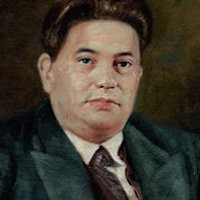 |
Darius Milhaud, 1892–1974. French composer.
A member of Les Six (with Satie, Poulenc, and others), Milhaud was a prolific composer in all media, noted for his early use of jazz and his experiments in polytonality and unusual instrumental combinations.
|
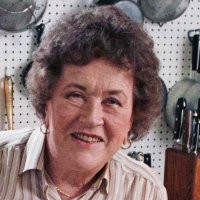 |
Julia Child, 1912–2004. American cookery writer.
Working in the OSS during WW2, Child met her future husband, Paul Cushing Child, and accompanied him on his posting to France in 1946. Although she was not yet a cook, her first taste of French food changed her life. She enrolled in the Cordon Bleu school in Paris, studied privately with French chefs, then with two French colleagues wrote the first of her many books aimed at the American housewife, and started the now-iconic television show to promote it.
|
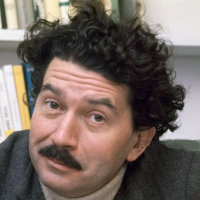 |
Alain Robbe-Grillet, 1922–2008. French writer.
Robbe-Grillet was one of the leading practitioners of the nouveau roman in which obsessive repetition of apparently minor detail took over from conventional character development and narrative. His screenpay for Resnais' Last Year at Marienbad is an unusually close adaptation of his style to the media of sight and sound.
|
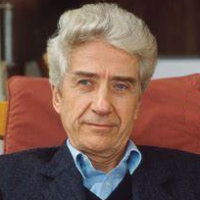 |
Alain Resnais, 1922–2014. French filmmaker.
One of the leading directors of the nouvelle vague, Resnais made his name with the short film Night and Fog (1956), about Nazi extermination camps, and the features Hisorshima, mon amour (1959) and Last year at Marienbad (1961). Many of his films were collaborations with experimental authors like Alain Robbe-Grillet and Marguerite Duras, who had never before worked in cinema.
|
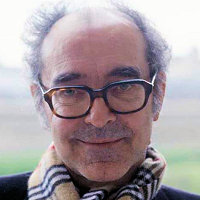 |
Jean-Luc Godard, 1930–2022. French filmmaker.
With François Truffaut, Godard was a leading theorist of film in the magazine Cahiers du Cinéma, founded in 1951. He first put his ideas into practice with A bout de souffle (Breathless), to a story by Truffaut, the breakthrough masterpiece of the nouvelle vague. He moved from there into a more politically-involved phase in the 1970s, and thence into the more mainstream market.
|
 |
François Truffaut, 1932–84. French filmmaker.
Working for Cahiers du Cinéma in the 1950s, he developed the auteur theory that elevates the role of a director like Alfred Hitchcock to a creative importance equivalent to the author of a novel. He became such a director himself in films that defined the nouvelle vague, such as the semi-autobiographical 400 Blows (1959), Shoot the Piano-Player (1960), and Jules and Jim (1962). He also wrote the story for Jean-Luc Godard's Breathless (1960).
|










































